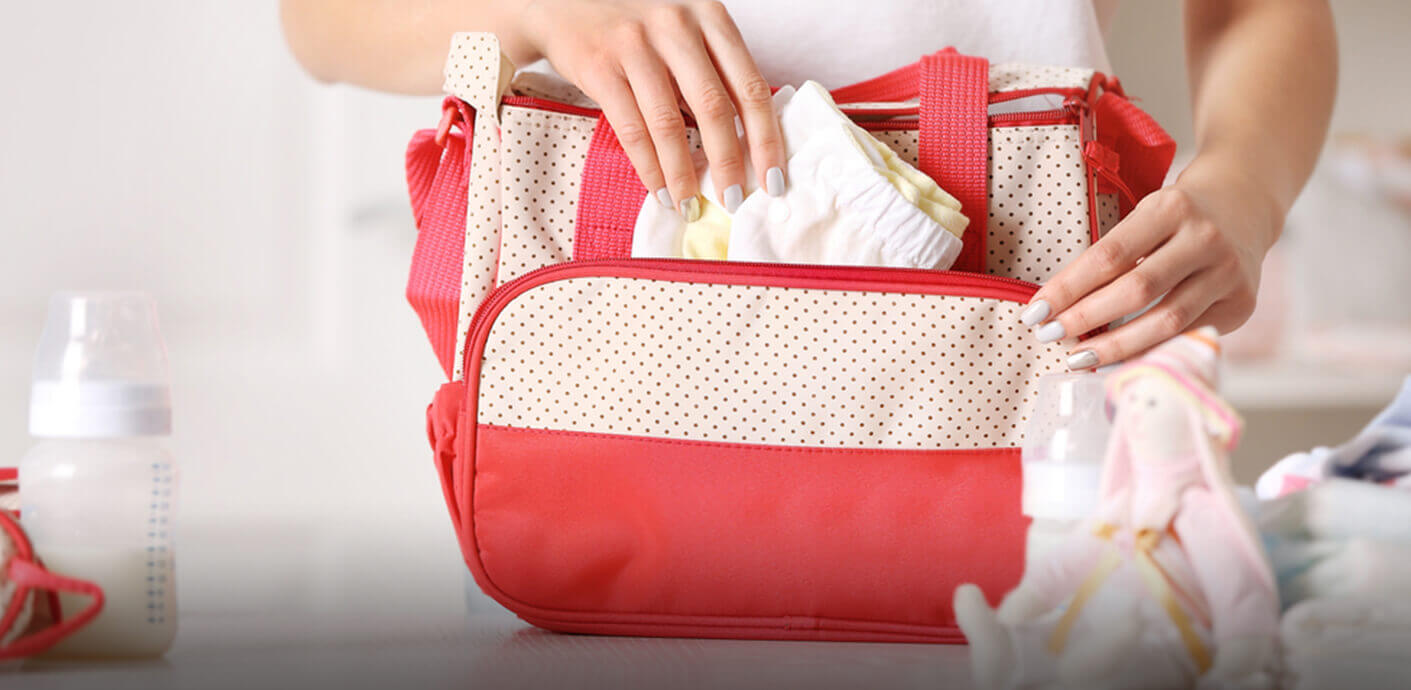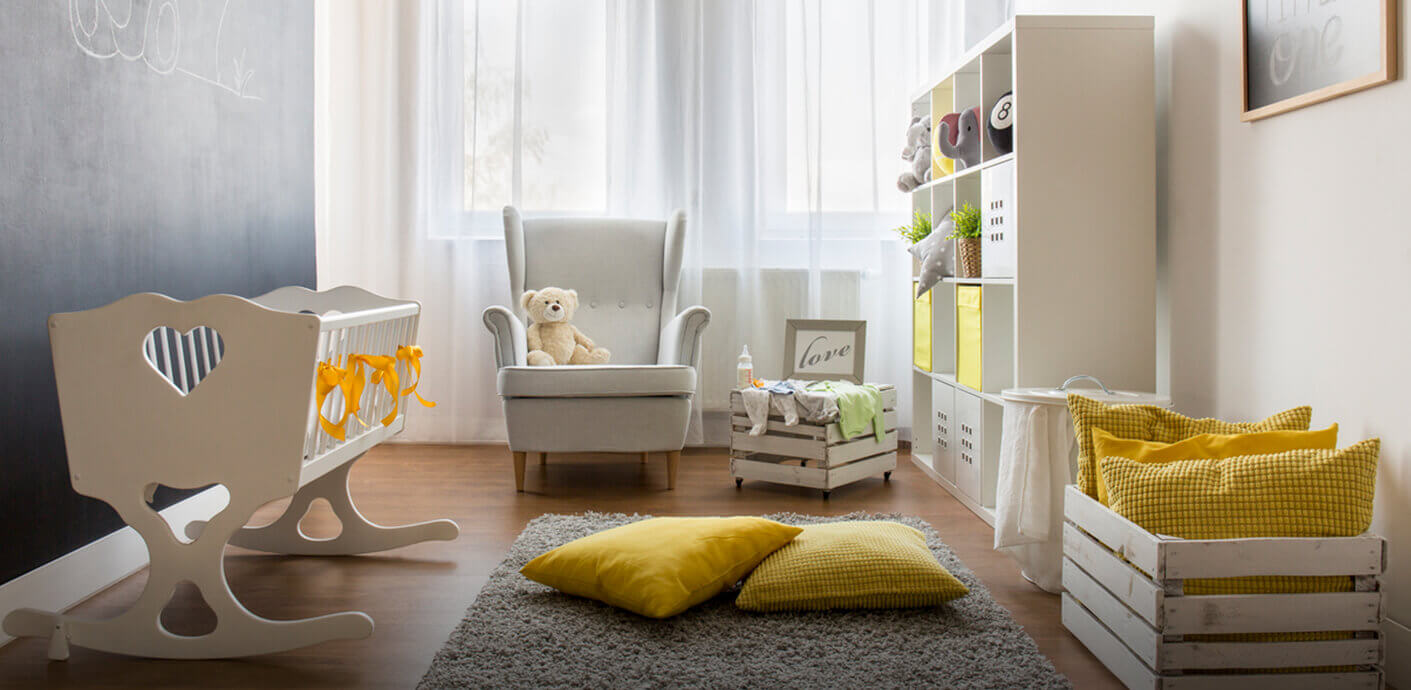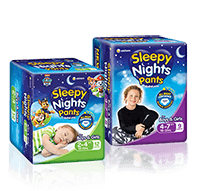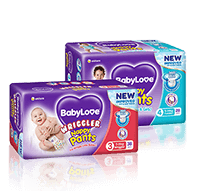Nappy Changing Hacks
Being a new mum can sometimes feel challenging, especially with all the outside voices telling you what you should and should not be doing. Before we get into some sneaky hacks that will undoubtedly make your life a lot easier, do you understand the do’s and don’ts of nappy changing? Keeping your baby still, avoiding messes and ensuring that changing a nappy is a safe, easy, quick and clean process, is sometimes much harder than the smiling baby and nappy-changing photos portray. Avoid disaster by using some simple advice.

Do’s:
Have a designated nappy changing station at home. Choose a space where you can easily and conveniently change your baby’s nappies for the majority of your time at home. Doing this ensures that you know everything will be in one place when you need it.
Keep everything near-by. Your nappy station should have all the things you need in your near-reach for effortless nappy changing. Make sure nothing is stored too far from your nappy changing station. Doing this will help you avoid ever having to turn your back or lose focus on your baby, even for a second. Before you start changing the nappy, make sure you have everything you need. This will help you avoid having to find a missing item in the midst of nappy changing, which could be a potential opportunity for an even bigger mess.
Clean up properly afterwards. Make sure both you and your baby are fresh and clean. Messes can get to the strangest places, especially during a nappy change. Therefore, before leaving your nappy changing station – do a quick check that everything around you and both you and your baby is clean. Also, do a quick wipe down with disinfectant of the nappy changing station surface before you leave.
Look at your baby’s skin, and if you notice his skin is looking red or itchy, he might have a nappy rash. The most common causes of nappy rashes are;
1. The irritation caused by continued contact with urine and stool.
2. Nappies themselves can cause rashes. Which is why it’s that much more important to choose the right nappy for your baby. See our Cosifit nappy range here: Residues from fabric softeners and detergents can also cause irritation as well as food allergies and transitions between new foods.
Did you know that using the wrong baby wipes can cause skin irritation? That’s right, and that’s why BabyLove Wipes are specifically designed to provide a soft and gentle clean for your little one’s delicate skin.
Don’ts:
Do not turn your back on your baby during changing time. Your baby is constantly wriggling and more likely than not, your nappy changing station could include the risk of your baby falling off. It is easy to get carried away in the chaos of changing some nappies. Always focus on your baby, where they are and how they’re doing.
Try not to rush the nappy changing process. Although you will have to change multiple nappies during the day, try not to rush changing your baby’s nappy. Over time and with more experience you will become quicker when changing nappies, but always make sure that it is a job well done. Slacking when it comes to changing nappies will only cause you more time and effort in the long-run, and increase the chances of having to re-change your baby’s nappy sooner rather than later.
Too much is never enough when it comes to stocking nappies. It is best to avoid running out of nappies. Better to have too many than realise you are out of nappies mid-change, resulting in a DIY impromptu mess that would rather have been avoided. In this case, less is not more. Carry as many spare nappies as you feel fit. Always assume that you are going to have to change a nappy – wherever you are. Prepare for ‘the worst’ and pack all the essential items needed to change a nappy on the go. You aren’t always going to have your full nappy kit with you, so store a nappy or two and some wipes in convenient places if you are going somewhere. The glove box of your car or packed in your stroller etc.
Don’t worry too much! Changing nappies is a part of the parenting process. Even though getting poop all over yourself might feel like your kryptonite at first, soon you will become immune to any messes and get the job done efficiently.

New Nappy Changing Hacks and Tips:
Nappy changing hack one: Keep your nails short and get a gel nail manicure. This way, you stop any poop getting under your fingernails, plus it looks beautiful while you’re changing nappies!
Nappy changing hack two: A travel-sized hairspray bottle will make changing nappies a whole lot easier. Some of the hardest nappy changes are the ones where the poop is stuck to your baby’s bottom. Get a small travel hairspray bottle and fill it with water and a squirt of baby oil. Keep it close by during nappy changes and use it to moisten stuck-on poop for easier cleanup. Alternatively, you can use BabyLove Wipes to get the job done in the same effortless way.
Nappy changing hack three: For newborns, put a thin layer of petroleum jelly on their bottoms. This makes it easier to clean up and remove dirty new-born nappies that can be especially tricky.
Nappy changing hack four: Use your pinky when applying nappy rash cream – this will keep the rest of you clean until you have to take care of the stinky situation.
Nappy changing hack five: Invest in a changing pad cover. Your baby will mess, that’s a given. But instead of washing your changing pad 900 times, grab an old pillow case and throw it over the changing pad. That way, you’ll end up washing the pillow cases instead of the entire pad.
Tips to help make change time a walk in the park!
Tip one to make change time easier: Keep them distracted. Use objects to distract them while you change their nappy. Introduce toys, rattles, stuffed animal or songs to preoccupy your baby and keep them still while nappy changing.
Tip two to make changing time easier: Change it up! At this stage, it’s adapt or die for anyone who knows what it’s like to change nappies on the go. Finding a nappy changing station as near as possible can be extremely challenging. So be prepared to make make-shift nappy changes. Even when you’re home, keep things around your house that make it easier to change nappies on the spot.
Tip three to make changing time easier: Talk to your baby. Have a chat with your young one while changing their nappies. It might feel odd at first, but your baby will be intrigued and preoccupied with your conversation while you get on with changing the nappy. Although newborns won’t understand the words that you are saying, they start to sense your intentions.
What causes a nappy rash?
Waiting too long to change a dirty nappy is one of the most common causes of a nappy rash. If your baby is prone to experience frequent diarrhoea, it is important to change his or her nappy as soon as possible. If the nappy is left on for too long, it will cause definite irritation of your baby’s sensitive skin. Not cleaning everything right the first time can also contribute to nappy rash. If you miss a spot every now and again – don’t panic. If this is a regular occurrence, it could, however, be one of the reasons that your baby is experiencing a nappy rash. Make sure to thoroughly clean your baby before you put on a new fresh nappy.
The nappies you use can influence the severity of your baby’s rash. If you are using a nappy that seems to be contributing to your baby’s rash, try using a nappy with a softer surface or loosen the nappy when putting it on and make sure the nappy does not rub against your baby’s skin too intensely. We have a range of BabyLove Nappies that come in a wide range of sizes. Each nappy is designed to gently hug your baby’s skin and to ensure ultimate comfort. See our full range of nappy products to choose the best possible nappy for your baby: https://babylovenappies.co.nz/our-nappy-products/
Did you know that certain fabric softener residues and washing detergents can have a bad reaction to your baby’s skin? Also, be sure to give any new items or clothing a quick wash before you put it on or around your baby.
Specific foods can contribute to your baby’s nappy rash as well as your baby transitioning between new foods. Generally, try to avoid citrus fruits and juices in the first year of your baby’s diet. If you are breastfeeding, make sure that your diet doesn’t contain foods that contain too much acid as it can lead to irritations in your baby’s nappy area as well.
The baby wipes you use could also play a part in nappy rashes. Some alcohol-based or fragranced wipes can be the cause of your baby’s nappy rash. If your baby has sensitive skin or is experiencing an unexplained nappy rash, try to leave the baby wipes for a while and see if the rash subsides. In this time, use a clean cloth and fresh water to clean your baby. If the rash is caused by the present wipes you are using, try to find an alcohol-free and non-fragranced wipe that is specialised for your baby’s skin. BabyLove Wipes are fragrance free, alcohol free and pH balanced which is perfect for your baby’s delicate skin. Find out where you can buy online here: https://babylovenappies.co.nz/where-to-buy/
A nappy rash could also be one of the side-effects of the medication your baby is on. Good news is that the rash will disappear as the intake of antibiotics stops. In the meantime, you can apply a nappy rash cream or ointment. If the rash looks abnormal or seems to cause extreme discomfort for your baby, contact your doctor to see alternative options and medication.
How many times a day should you change your newborn’s nappy?
Babies urinate approximately 20 times a day for the first several months of their lives. If you had to change your baby’s nappy every time they urinate, it would be extremely expensive and exhausting. You should aim to change him/her every 2 to 3 hours. That being said, it is not necessary to wake a baby to change a wet nappy. However, the acid content of a bowel movement may irritate your child’s skin and should be changed as soon as possible once your baby is awake. The number of times a baby has a poo can vary quite a bit. For the first weeks, breastfed babies will do so more often than bottle-fed ones, possibly after every feed.
In the first few days, your baby will need changing about 12 times a day. After this, for the first few weeks, they’ll still poo several times a day and wet at least six nappies. As they get older, they may have just one or two poos a day. It’s important that you don’t leave them sitting in a wet or dirty nappy for too long. This is because wee, and the bacteria in poo, may make skin sore and lead to an uncomfortable nappy rash. Changing your baby’s nappy will also depend on your baby’s temperament. Some babies handle a wet nappy better than others. Some babies might need their nappy to be changed after every single wee, whereas some would go all day in a dirty nappy and have it not bother them. Of course, though, we still need to change their nappies even though they fight against it.
Nappy Changing tips for the mum-on-the-go!
Are you a jet-setter? Or simply a busy mum-on-the-go? Before having your baby, things might’ve been a little different, and now, carrying around a nappy bag might take a little getting used to. Not to worry though, we’ve got some valuable tips for you to successfully do a nappy change on-the-go, leaving you and baby with big smiles.
Nappy changing tip one: Carry a nappy bag with plenty of different compartments. Sorting your nappy bag in different sections will make it easier to change your baby’s nappy quicker and more effectively. This way, you will know where everything is instead of searching through a big bag to find everything you need.
Nappy changing tip two: Make sure your changing mat is big enough for the surface you need to change your baby’s nappy on. Changing nappies on the go is unpredictable, so having a mat that covers enough area for a comfortable nappy change is crucial.
Nappy changing tip three: Always wipe down surfaces using BabyLove Wipes before changing your baby’s nappy in public.
Nappy changing tip four: Be prepared to dispose of the nappy. There won’t always be a bin where you can quickly and easily dispose the dirty nappy. Therefore, it is always handy to carry some disposable bags to put the nappy in until you find a more suitable place to dispose of it.
Nappy changing tip five: If you aren’t near a sink, carry some hand-sanitizer to freshen up after your nappy change.
Nappy changing tip six: Over time your nappy bag can get unhygienic, especially when used to store dirty nappies temporarily. It’s easy to skip over this one, but make sure to wash out your nappy bag frequently as well. Make sure to keep your nappy bag fresh and clean at all times to avoid any germs passing onto your baby.
As you’ve been reading, baby wipes have popped up numerous times. But, why are baby wipes so important?
Babies have incredibly sensitive skin as they have been well-protected inside the womb for so long, their exposure to the harsh elements of our environment takes some getting used to. Finding the right wipes for your baby is a delicate issue as some babies can develop rashes or allergic reactions to certain ingredients in the wipes. This may not agree with your baby’s soft skin and may cause them more discomfort. It is of the utmost importance to use specific wipes on your baby, to ensure their gentle skin is taken care of. BabyLove Wipes are fragrance-free, alcohol-free and pH balanced, ensuring that your babies bottom is well looked after and protected against germs. BabyLove Wipes are suitable for newborns and babies with sensitive skin and make cleaning up an absolute breeze.
“Sources:
http://healthylivingmadesimple.com/dos-and-donts-for-diapering-duty/
https://www.webmd.com/parenting/features/healthy-nappying#1
https://www.romper.com/p/9-nappy-changing-hacks-that-will-save-your-butt-babys-too-9571
https://www.huggies.com/en-us/tips-advice
http://www.momtastic.com/parenting/539465-tips-for-changing-newborn-nappys-on-the-go/
https://www.webmd.com/parenting/features/healthy-nappying#2
https://www.tesco-baby.com/baby/changing/often-i-change-babys-nappy/#
https://happybabyusa.org/2013/01/02/can-baby-wipes-cause-diaper-rashes/
https://www.nhs.uk/conditions/pregnancy-and-baby/nappy-rash/
https://www.babycentre.co.uk/a536384/nappy-changing-the-basics#ixzz53lsvYXio




